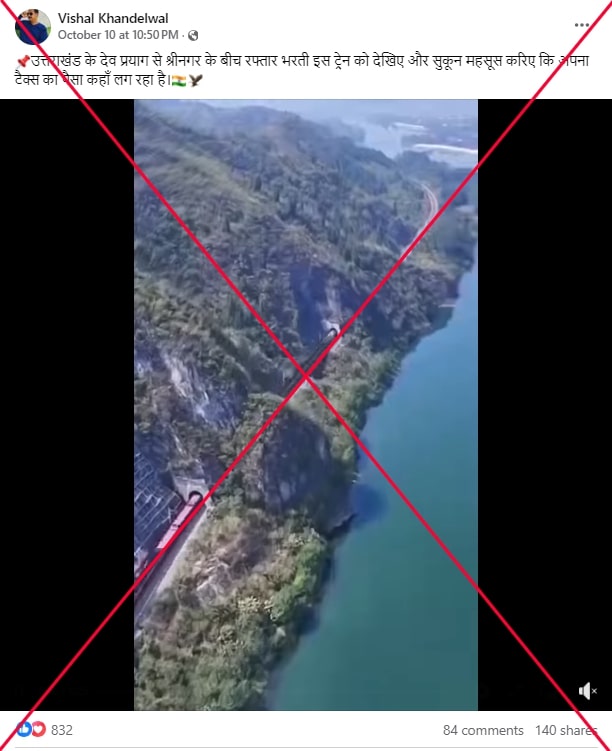Indian transport officials have set an ambitious deadline to complete a major railway construction project in Uttarakhand state by December 2025. This project, known as the Rishikesh-Karnaprayag railway line, is designed to facilitate connectivity through the challenging topography of northern India, stretching approximately 125 kilometers with 12 stations along the route. However, misinformation has emerged, notably through social media, misleading people into believing that the railway line was completed earlier than projected. Incorrectly attributed footage of a high-speed train navigating through rugged mountain tunnels has gained considerable traction online, with millions of views. The video in question has been mistakenly identified as showcasing the finished railway project, posted on platforms like Facebook and X.
The viral video has been explicitly characterized as showing the train journey between the towns of Devprayag and Srinagar, two stations on the railway project under construction. This misconception is further fueled by captions that portray the visuals as evidence of successful infrastructure development funded by taxpayer money. However, officials have confirmed that the actual railway construction is still ongoing, and the track itself remains unfinished. Ajit Singh Yadav, the chief manager overseeing the Uttarakhand rail line project, emphasized that reports of completion are incorrect and reiterated the December 2025 deadline. India’s Ministry of Railways has also been proactive in communicating updates about the ongoing work through social media, dispelling rumors fueled by the viral video.
A deeper investigation into the origin of the misleading video revealed it was not filmed in India, but rather in Hunan province, China. Journalists conducted a reverse image search that traced the video’s release to Douyin, the Chinese version of TikTok. Comments on the original video identified the shooting location as near Yanbodu town in Cili County, Hunan Province. Subsequent searches uncovered a longer version of the same footage shared on multiple platforms, including Instagram, all reaffirming the video’s authentic Chinese roots. Such findings are detrimental not only to public understanding of the Indian railway project but also to the integrity of communications regarding economic progress in India.
The video’s viral spread demonstrates the ease with which misinformation can mislead the public regarding major infrastructure projects. It emphasizes the need for heightened awareness about fact-checking and verifying sources before sharing information, especially in the context of national development. Indian officials are now faced with the challenge of countering the false narrative while underscoring the significance of the ongoing railway construction for regional development and connectivity improvements. These projects are critical to enhancing transportation, fostering economic growth, and ensuring the well-being of communities in the hilly terrain of Uttarakhand.
Moreover, the repeated occurrences of misleading visuals in similar contexts compel authorities to adopt transparent communication strategies to keep citizens informed about progress and challenges in major projects. By actively sharing authentic updates and construction timelines—overshadowed by viral misinformation—officials can work to rebuild trust and confidence in governmental efforts. The false portrayal of the project’s completion highlights potential pitfalls in the information landscape, which can inadvertently undermine public perspectives on advancement and investment in infrastructure.
In conclusion, the misconception regarding the status of the Indian railway construction project underscores the broader themes of misinformation and the importance of accurate representation of developmental initiatives. While the completion target of December 2025 stands, the incident serves as a critical reminder of the role of social media as a double-edged sword in shaping public perception. As the Uttarakhand railway project continues to develop, officials must stay vigilant and proactive in providing clarity, thereby ensuring that the narrative around India’s infrastructure endeavors reflects their true state and significance in enhancing regional connectivity.

